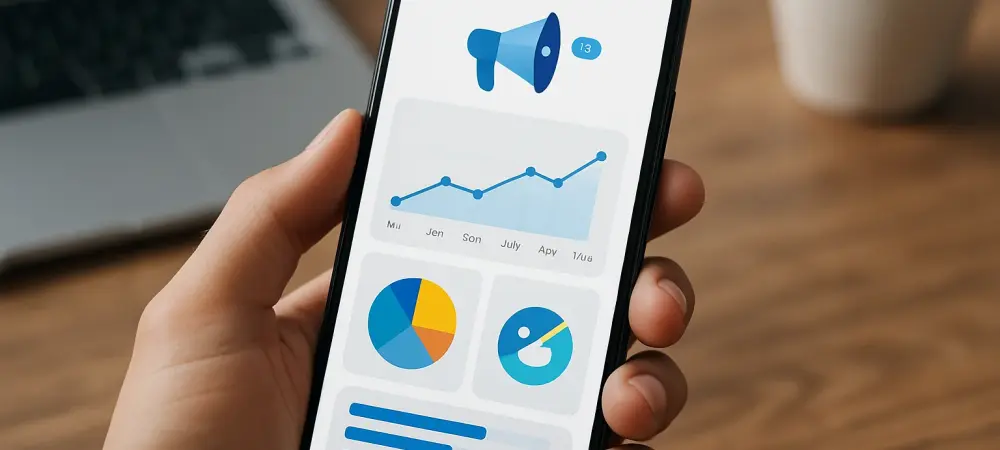Welcome to an insightful conversation with Aisha Amaira, a renowned MarTech expert whose passion for blending technology with marketing has transformed how businesses connect with their audiences. With deep expertise in CRM marketing technology and customer data platforms, Aisha has dedicated her career to helping companies uncover vital customer insights through innovative tools. In this interview, we dive into the dynamic world of digital marketing, exploring how it boosts visibility, builds trust, targets the right people, drives conversions, and fosters lasting customer relationships. We also touch on the exciting synergy between digital strategies and mobile apps in today’s mobile-first landscape. Let’s get started!
How does digital marketing play a role in making a business stand out in today’s crowded online space?
Digital marketing is absolutely crucial for visibility in today’s market. It’s not just about having a great product or service; it’s about making sure people can find you when they’re looking for solutions. Strategies like search engine optimization, social media presence, and online ads ensure your brand pops up in multiple places. The more touchpoints you have—whether it’s a Google search or a social media feed—the better your chances of catching a potential customer’s eye. It’s like setting up shop on every busy street corner instead of just one.
What makes digital marketing so effective at reaching the right audience compared to older, more traditional methods?
Unlike traditional marketing, which often casts a wide net hoping to catch a few interested folks, digital marketing is all about precision. Tools like Google Ads or social media advertising platforms allow you to narrow down your audience by specifics like age, location, interests, or even online behavior. This means your message reaches people who are already inclined to be interested in what you offer. It’s a game-changer because you’re not wasting resources on people who’ll just tune out—you’re speaking directly to those most likely to engage.
In what ways can digital marketing help a business establish trust with potential customers?
Trust is everything in today’s market, and digital marketing helps build it by letting businesses share valuable, authentic content. Think blogs that solve real problems, videos that showcase expertise, or case studies that prove results. When you position yourself as a knowledgeable resource, not just a seller, customers start to see you as credible. That confidence often tips the scale when they’re deciding who to buy from. It’s about showing you understand their needs and can deliver, long before they even reach for their wallet.
How does the ability to measure results in digital marketing contribute to turning interest into actual sales?
The beauty of digital marketing is that almost everything can be tracked and analyzed. Tools like Google Analytics give you a clear picture of what’s working—whether it’s how many people clicked on an ad, stayed on a landing page, or completed a purchase. You can measure things like click-through rates or conversion rates and use that data to refine your approach. If something isn’t performing, you tweak it. Over time, this constant optimization turns more curious browsers into paying customers because you’re always improving based on real feedback.
What strategies in digital marketing do you find most effective for encouraging customers to come back after their first purchase?
Keeping customers engaged after that first sale is where digital marketing really shines. Email campaigns are fantastic for staying top of mind—think personalized offers or helpful tips tailored to their past purchases. Retargeting ads also work well by reminding people of products they viewed but didn’t buy. And don’t underestimate loyalty programs; they reward repeat business and make customers feel valued. When you combine these, you’re not just chasing one-time sales—you’re building a relationship that turns buyers into advocates who spread the word.
How does digital marketing go beyond just visibility to create a complete customer journey from discovery to purchase?
Digital marketing isn’t just about getting seen; it’s about guiding people through every step of their decision-making process. It starts with discovery—maybe they find you through a search or a social post. Then engaging content, like a helpful blog or an eye-catching video, keeps them interested and builds trust. Smart targeting ensures you’re reaching the right folks, and data-driven tweaks help refine the experience. By the time they’re ready to buy, they’ve already connected with your brand on multiple levels. It’s a seamless path that feels natural, not forced, and that’s what drives results.
Why do you think pairing digital marketing with a mobile app can give businesses a competitive edge in engaging users?
In a mobile-first world, apps are a powerful extension of digital marketing. They create a direct, personal connection with users right on their phones, where most people spend their time. An app paired with digital strategies lets you push tailored notifications, offer in-app exclusives, or streamline the buying process. It’s about meeting customers where they are and making interactions effortless. Plus, apps collect valuable data on user behavior, which feeds back into your marketing to make it even sharper. It’s a win-win for engagement and loyalty.
What’s your forecast for the future of digital marketing as technology continues to evolve?
I think digital marketing is only going to get more personalized and tech-driven in the coming years. With advancements in AI and machine learning, we’ll see even smarter targeting and predictive analytics that anticipate customer needs before they even express them. Privacy will also be a huge focus—businesses will need to balance personalization with transparency to maintain trust. And as platforms like augmented reality or voice search grow, marketers will have new, immersive ways to connect. It’s an exciting time, but the core will always be about understanding and serving the customer better through innovation.

